In the last game week of the Euro 2020 Qualifiers Spain welcomed Romania in what was seen to be an interesting fixture but was pretty much a one-sided game at the end. The hosts have demonstrated their strength on the East-Balkan country and have shown that they have plenty of players that could fit the starters role in the jersey of the national team.
Roberto Moreno’s men were quite a better side throughout the 90 minutes and were in control of the play in the majority of the time, resulting in the alluring 5-0 win. This tactical analysis will show you how did the home team’s tactics overpower their opponent’s one in the match that was in no way a competitive for both of the sides.
Lineups
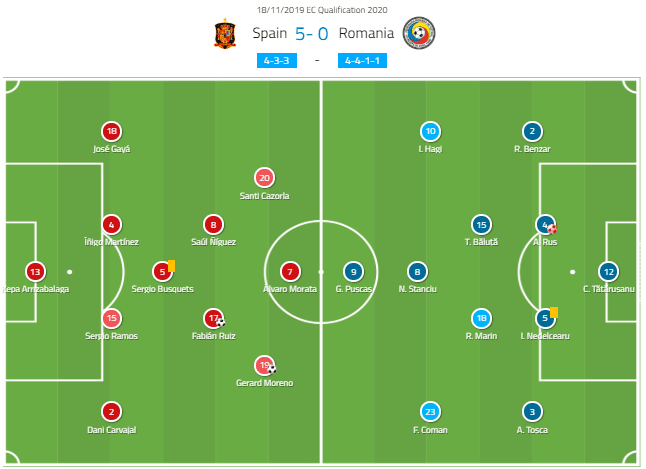
Spain went into the game with their most common 4-3-3 formation, but with players having not that strict position-roles in it. The main part of the team was the midfield which was held by Sergio Busquets along with Fabián Ruiz and Saúl Ñíguez. They had a lot of help coming from inverting-wingers embodied in Santi Cazorla and Gerard Moreno, who also provided the lone striker Alvaro Morata with support.
Cosmin Contra set his team in the 4-2-3-1 formation and was forced into defending from the first minute. His offensive arsenal was composed of the likes of Nicolae Stanciu, George Puscas and Ianis Hagi, but they didn’t have much of a chance to show the world their strengths due to their opponent’s great organisation.
Spain’s full-backs’ work
The hosts occupied the opposition right from the start of the match and tried to dictate the rhythm of actions. Basing their game on possession, the key thing for their success was also a good positioning and constant motions their players had and which they repeated circularly.
The play was mostly happening on Romania’s half of the pitch, and that being said, the space for Spanish footballers manoeuvres was narrowed down which led them to rotate and to position very high up the pitch. Their wingers had a task to cut inwards and to search for the room in the half-spaces, while their flank-positions were filled up by the full-backs.
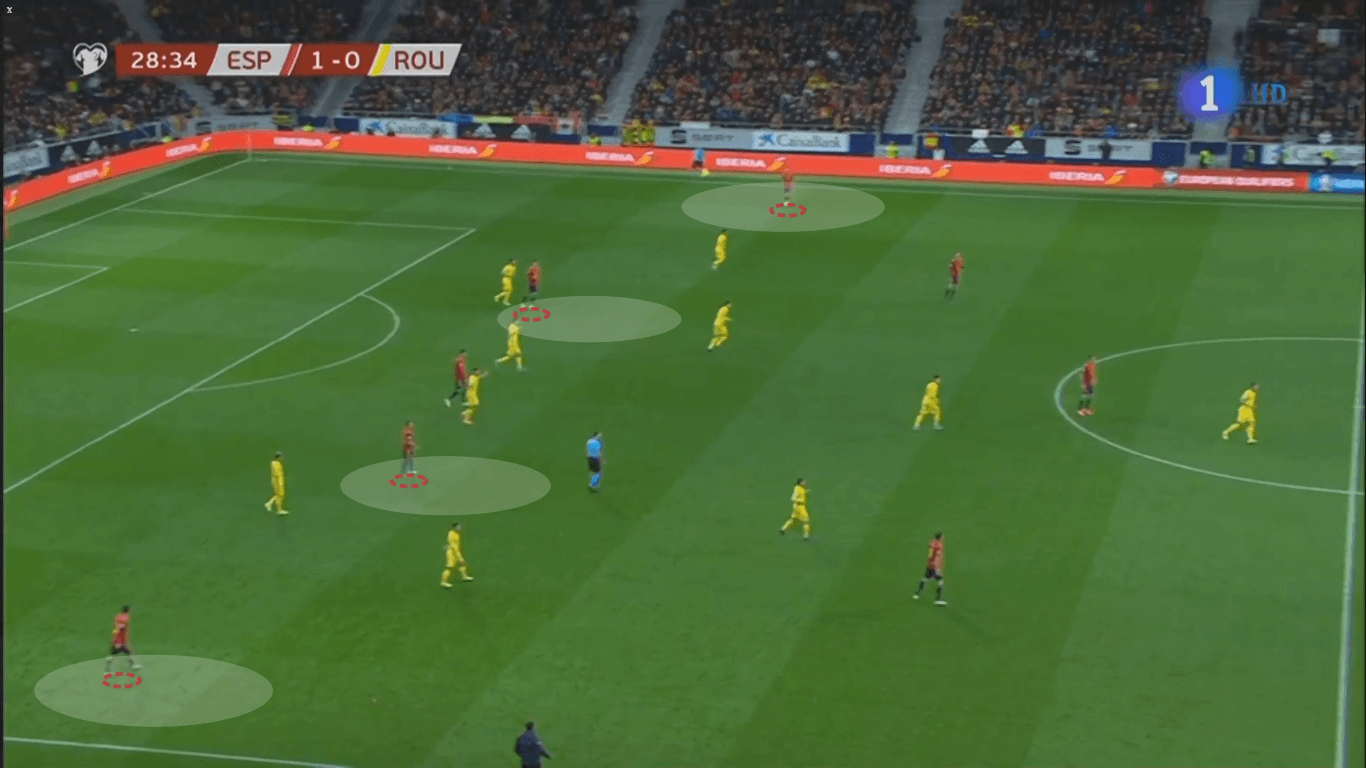
This was the most usual positioning from Spain while they were attacking, and through which they created most of their chances. Wide defenders played a huge role in the offence as they were one of the key endangering weapons for Roberto Moreno’s team. Dani Carvajal and Jose Gaya tended to overlap down the outer-corridors and to be the men who assisted for most of the shots their side had.
Those situations came out from the inside-cutting of Cazorla and Gerard Moreno, who stood pretty close to the single striker in the biggest part of the match. Three forwards time and again created a triangle in the danger zone which brought them into a numerical advantage over the opponents in the restricted areas and also focused defenders’ attention to them opening the room for their lower teammates to run in.
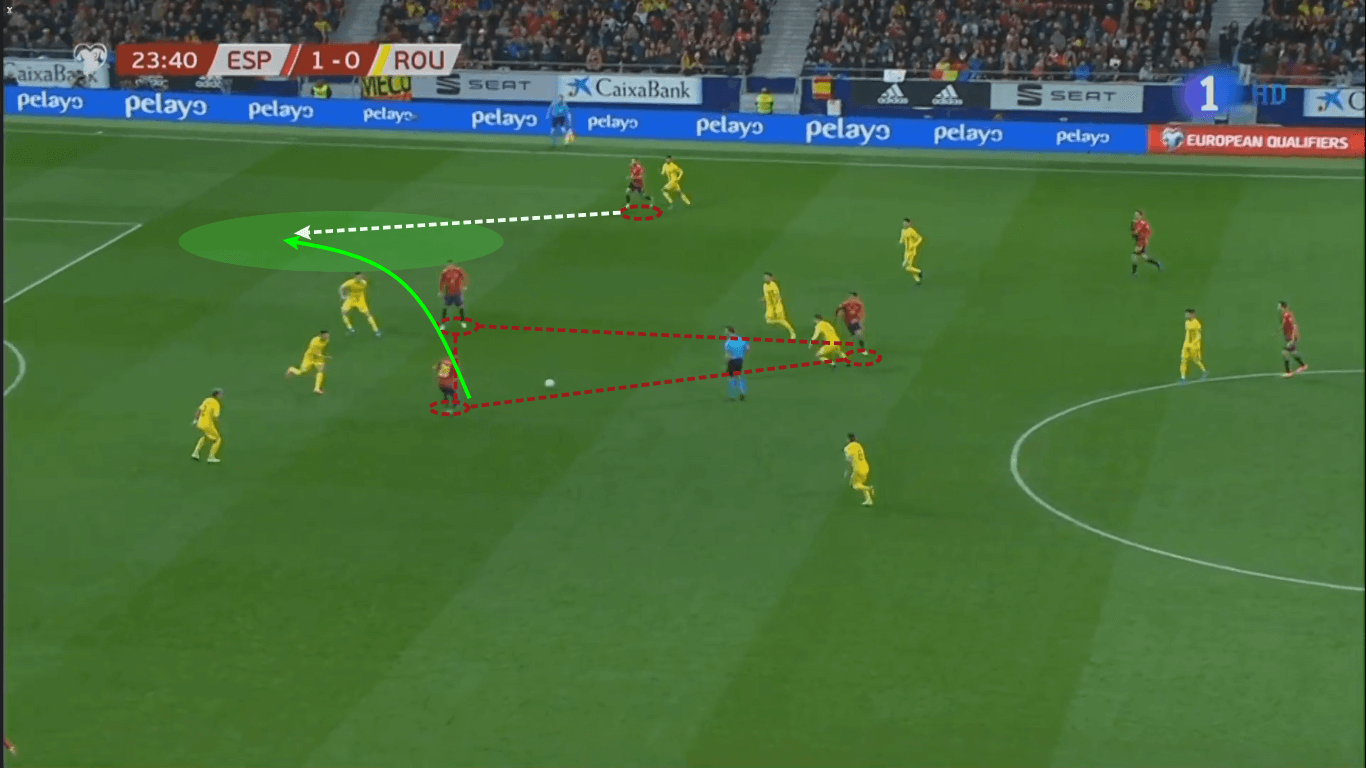
Spain got to huge opportunities and goals profiting from alike scenarios since the offensive-mindedness of their full-backs kept them almost all the time close to the final third of the field. Wide defenders were habitually playing the final and key passes resulting with assists next to their name for both of them.
Gaya and Carvajal provided their team with a hard-to-defend attacking option because of their pace and agility which the hosts used through frequent isolations of those players. The offensive side of the home team tried to overload on the one-hand side while leaving one of the defenders wide on the opposite to whom they could send the long diagonal balls after they beat the opposition in the tight space.
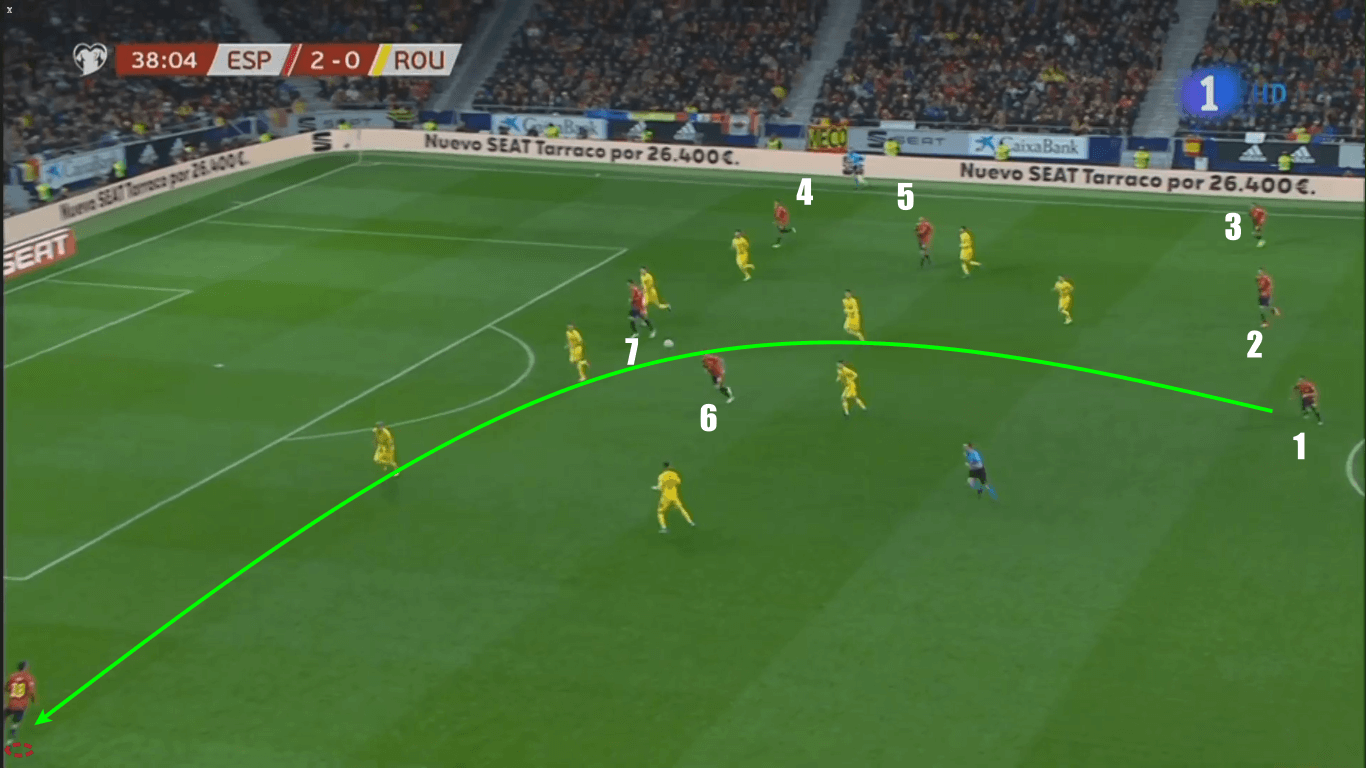
Here we can see the pattern of those actions from the hosts who repeated them successfully and benefited from them multiple times during the 90 minutes. The midfielders were very secure on the ball and their passes were quite precise which enabled them to play in this way with Busquets as a key man in the attack-organisation.
Offensive ideas and rotations
As they tried to play it very high up the pitch and to dictate the rhythm in the limited areas, the Spaniards needed to move constantly in order to break Romania’s lines. Cazorla and Moreno’s inside-positioning made it easier for them to switch places with each other and to confuse the opposition in terms of not knowing the next step of the clearly dominant side.
The two of them, together with Morata, were separated with a small distance between them in a majority of the game, which mostly triggered defenders to watch out just for them and to leave the space on the flanks free. Three midfielders did a great job sensing the action that happened in front of them and conducted their actions perfectly addressing a lot of balls to the full-backs who were positioned high on the flanks.
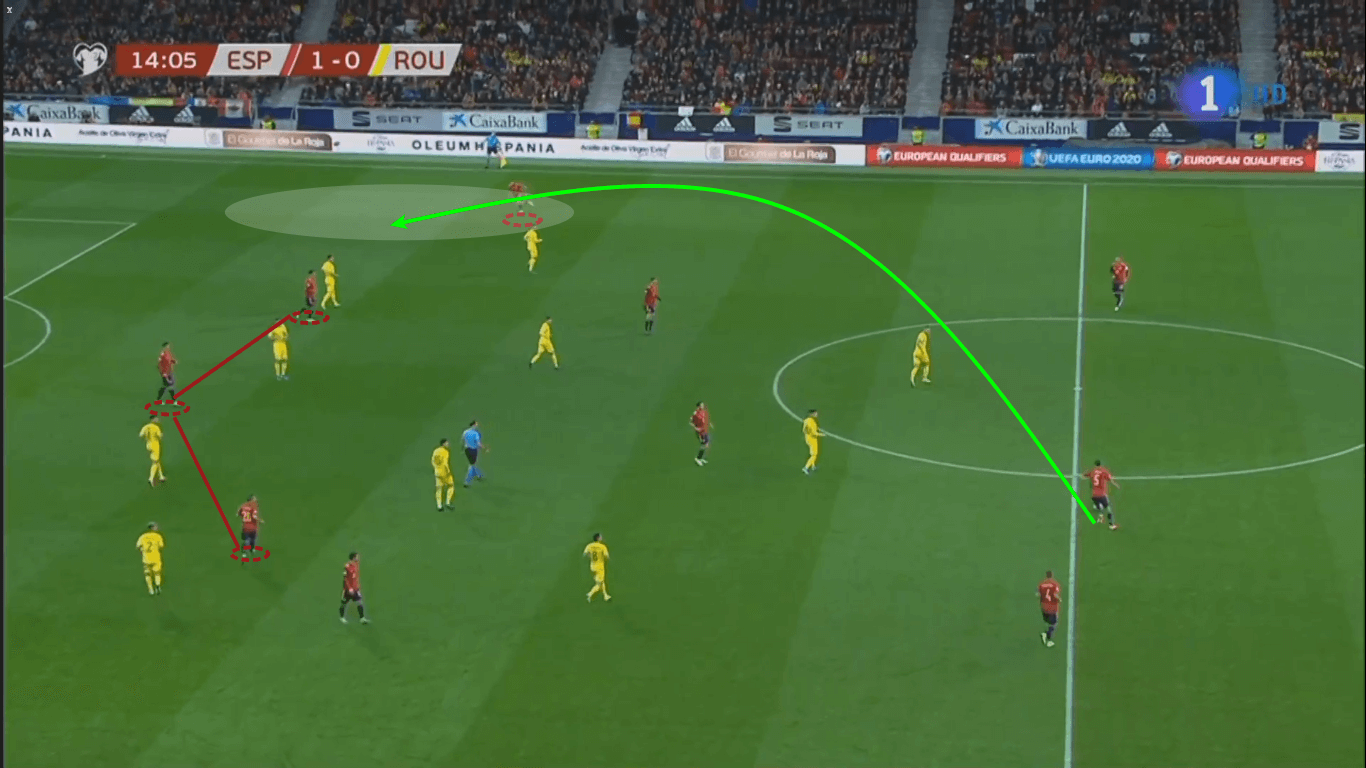
This situations made a basis for wide defenders’ overlaps and secured the frequency of dangerous attacks down the outer-corridors as it was explained earlier in the analysis. Busquets played as a metronome of the team sending accurate long balls again and again to players in the best position.
Midfielders also did a great job rotating with the wingers who were placed in the half-spaces. As the two of them tended to lower and participate in the play organisation, their direct guards followed them out of their position which cracked the open room behind their backs for second-line run-ins.
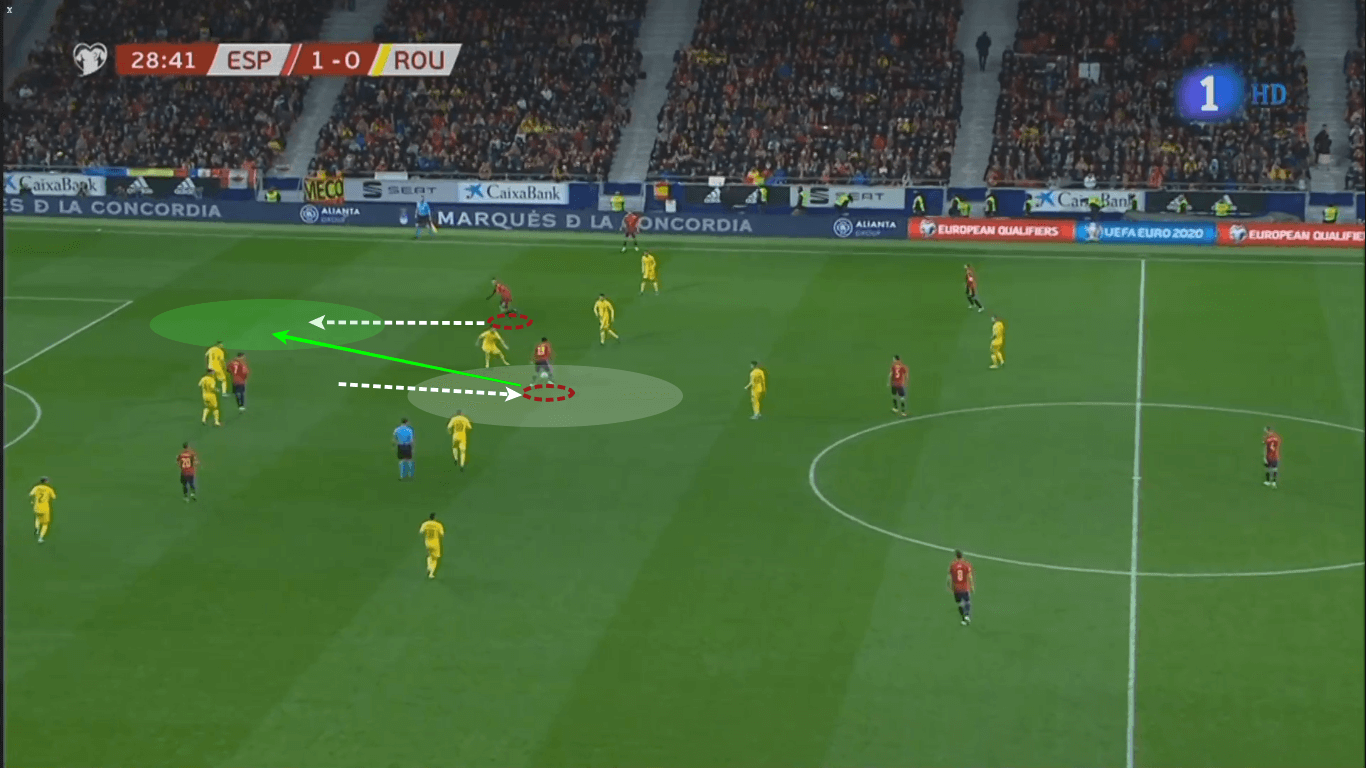
Both Ruiz and Saúl repeated those runs and went higher up the pitch in order to exploit those gaps as it is shown in the picture. They offered extra-options to their teammates in the final thirds and were in advantage over the opponents as they were coming into those positions faced forward to the goal and at full speed.
They reprised those runs even when they didn’t have a player in the higher line to rotate with if space was broken free due to a miscommunication in Romania’s defence. Their sense to add-up to the offensive part of the team in the final third was on a very high level and they used a lot of long balls to create chances for their team.
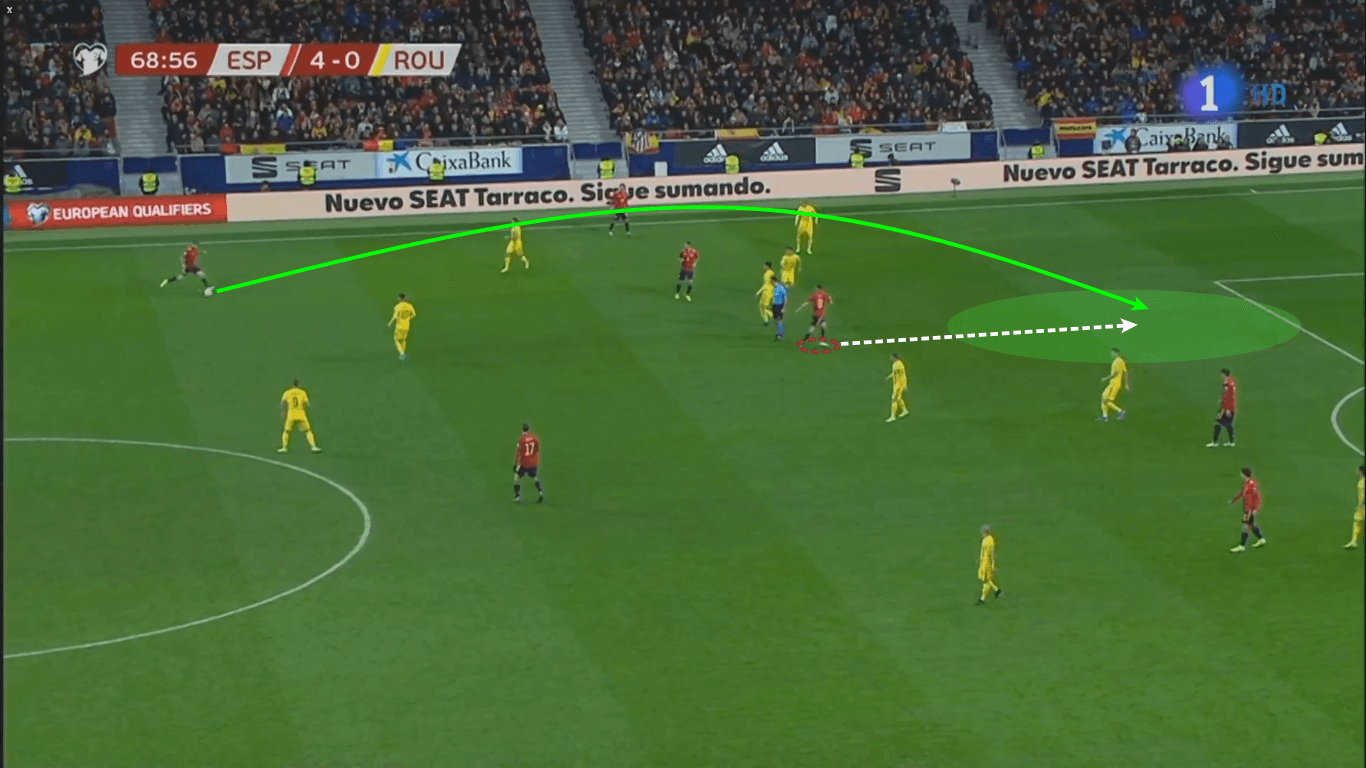
Closing down Romania’s progress
Spain’s aggressive play was not only happening when they had the ball since they also tried to regain possession as soon as they lost it. That resulted in them setting up in the high pressing structure with a clear intention to leave the opponents with as little time as possible when they had a ball in their feet.
To do so, Moreno’s boys continued playing mostly on the opposition’s half and setting their eleven men in a man-marking shape all over that part of the pitch. The orientation of their block varied throughout the game but they were always very close to the guard direct rivals in their zones.
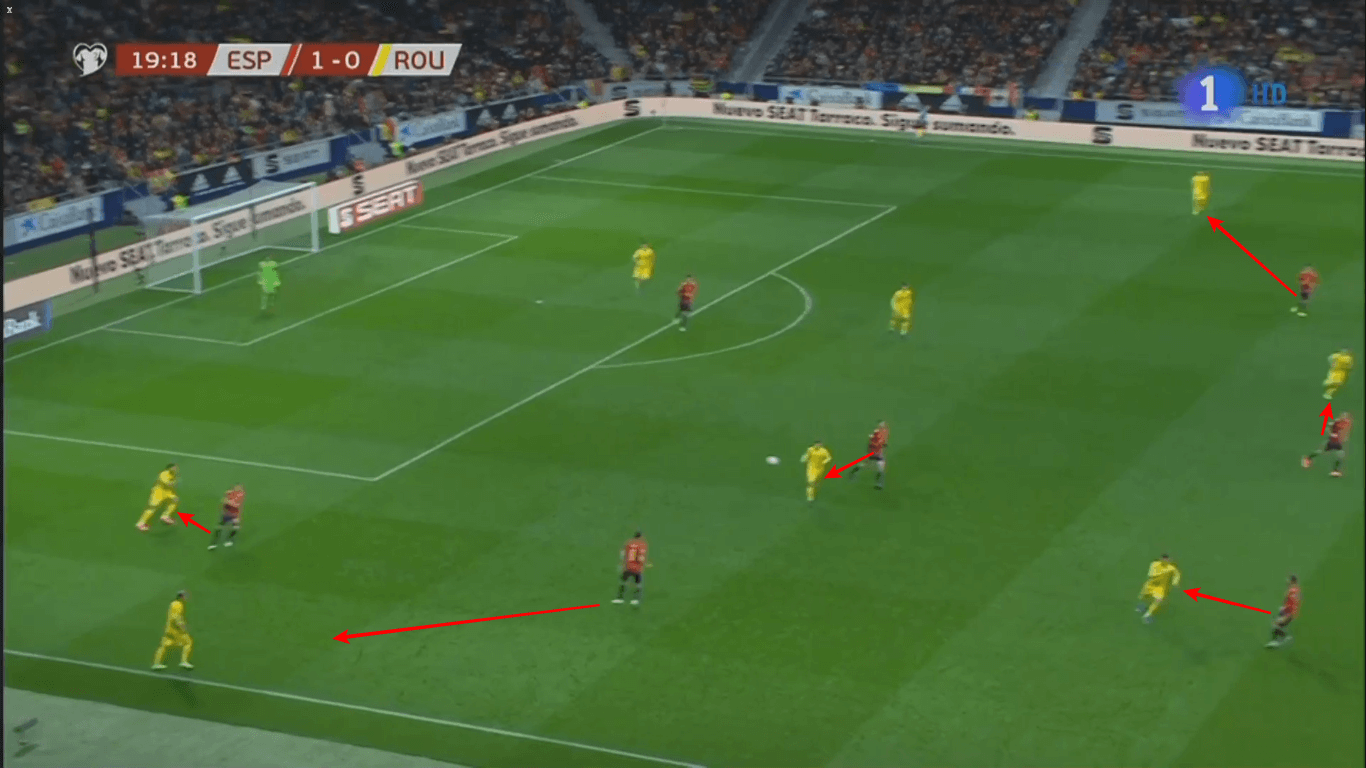
In the picture above, we can see how the hosts tried to stay very close to their opponents and how they managed to shorten their space for a manoeuvre. Good movement of the Spanish midfielders enabled them to create defensive surplus situations in the central zone of the field if the high press was beaten so they got to a lot of balls somewhere near the half-way line. Busquets, Ruiz and Saúl tracked the actions very well providing each other with support and closing down the potential pass-through options for the opposition so their team time and again succeeded in regaining possession out of those scenarios.
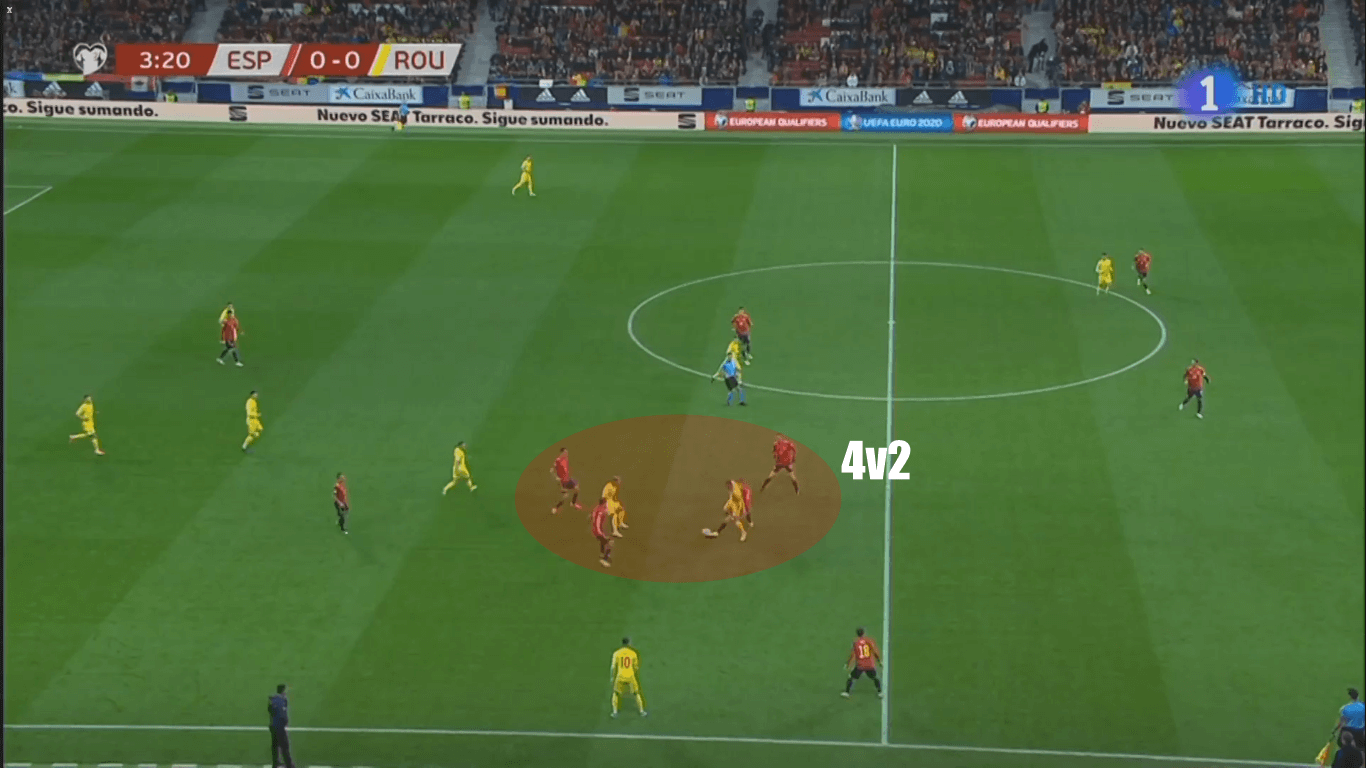
The main idea for them was to create “cages” in the central block which would leave the creative players of Romania with no progressive possibilities and which would ease them to win the ball back. Surely, that was the plan if the initial high press didn’t go as planned, but they were very good in organising the pressure in their opponent’s opening third and often didn’t allow them to even get to be “caged”.
When they were in a high pressing structure, they were using the same pattern as they did in the lower parts of the pitch – trying to create a defensive surplus and providing the initial press players with the second line of support.
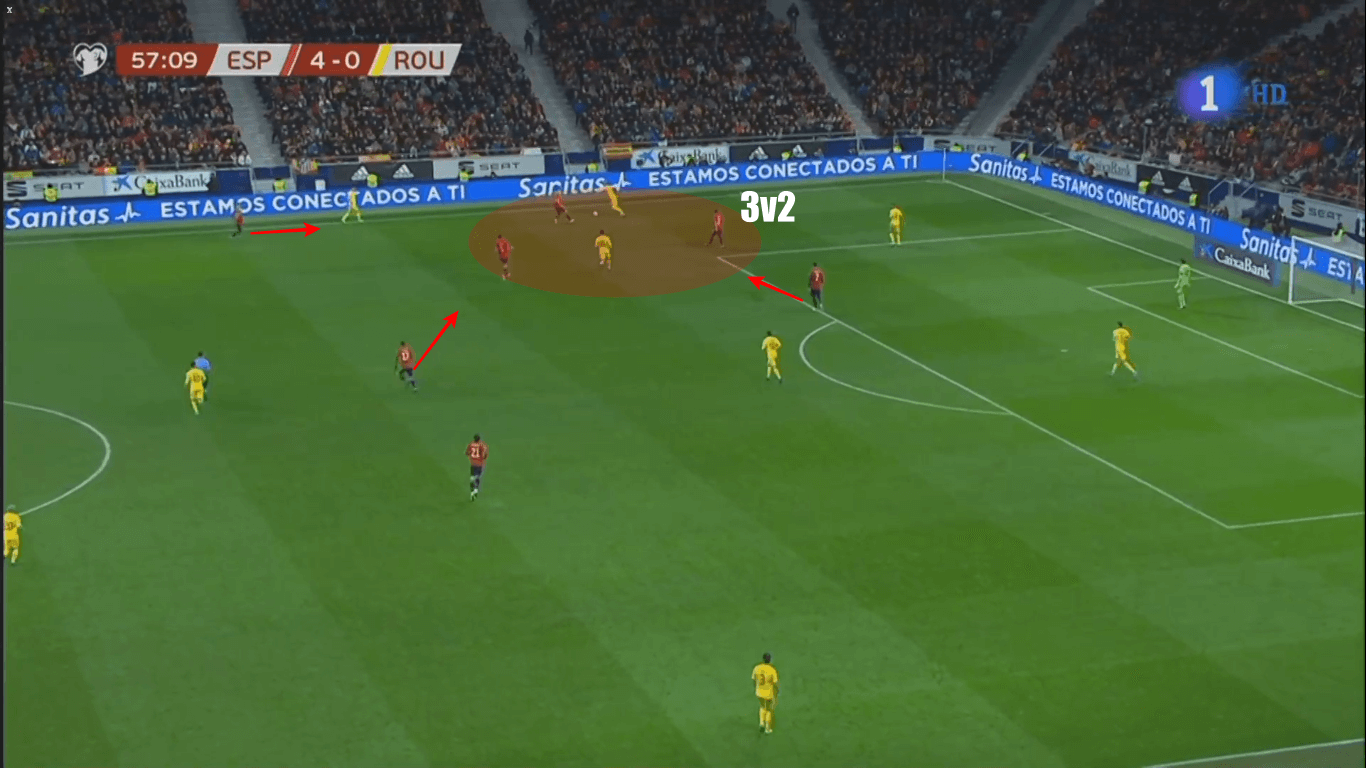
As we can see, their aggressive press was mostly flank-oriented in those situations and they had two lines of pressing, with both of them guaranteeing them a numerical advantage over the opponents. Romania had big issues dealing with that type of defending since they lacked both time and options to move forward, so the Spaniards broke into a lot of scoring opportunities directly from pressing-game.
Conclusion
The hosts totally deserved a 5-0 win, especially with their play in the first half of the match. They delivered some high-rhythm fluid-passing game and were on a very high level which sets them in the narrowest circle of favourites for the upcoming Euro 2020. Now, their players will have games to prove quality and to fight out for the spot on the list of footballers travelling to the competition, which will surely be a difficult job for Spain’s national team coach – to pick out from the wide high-quality roster.
Romania will have their chance to qualify through the UEFA Nations League playoffs, but they need to improve their game if they want to secure a place on the final tournament.

If you love tactical analysis, then you’ll love the digital magazines from totalfootballanalysis.com – a guaranteed 100+ pages of pure tactical analysis covering topics from the Premier League, Serie A, La Liga, Bundesliga and many, many more. Buy your copy of the November issue for just ₤4.99 here





Comments